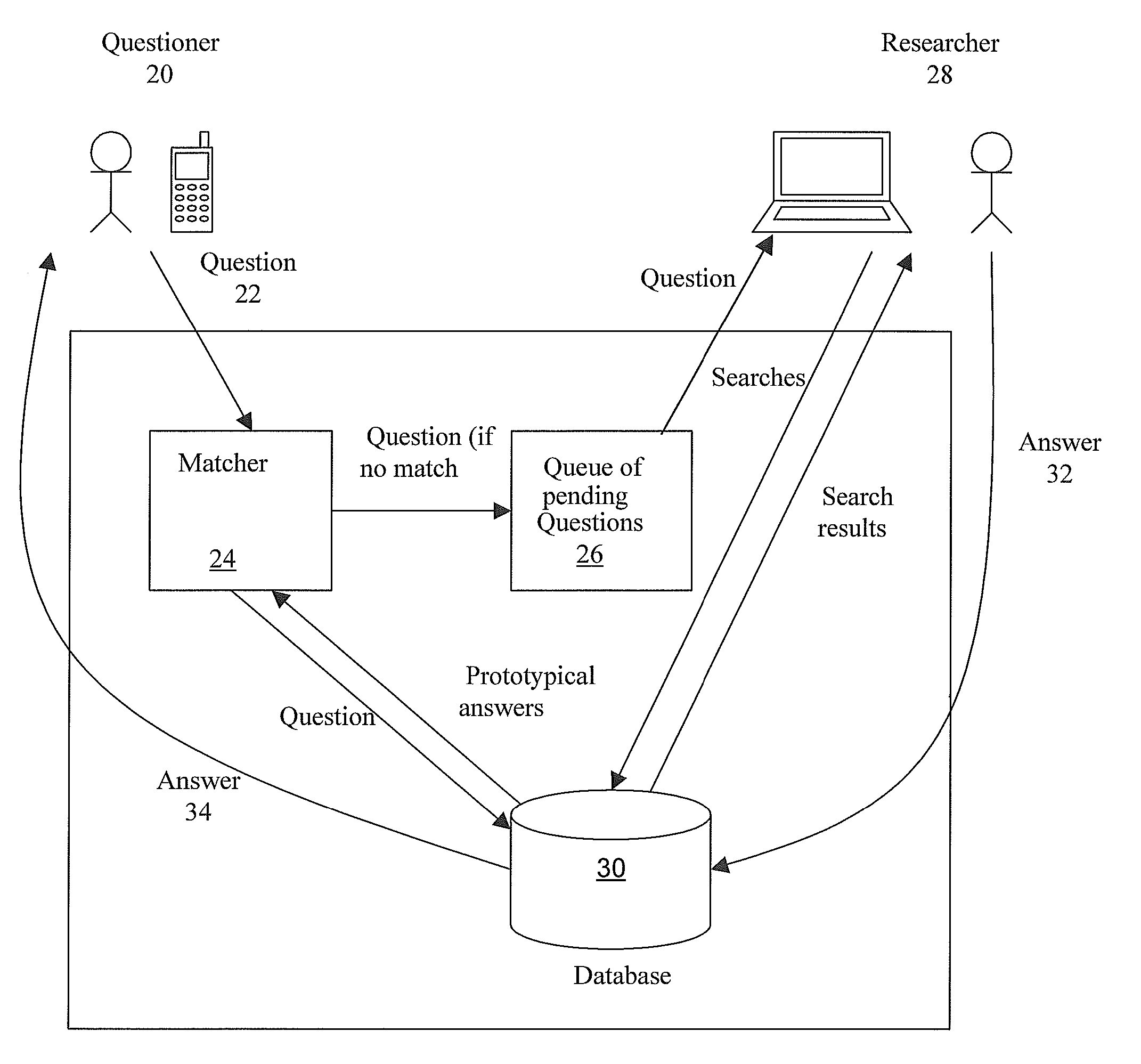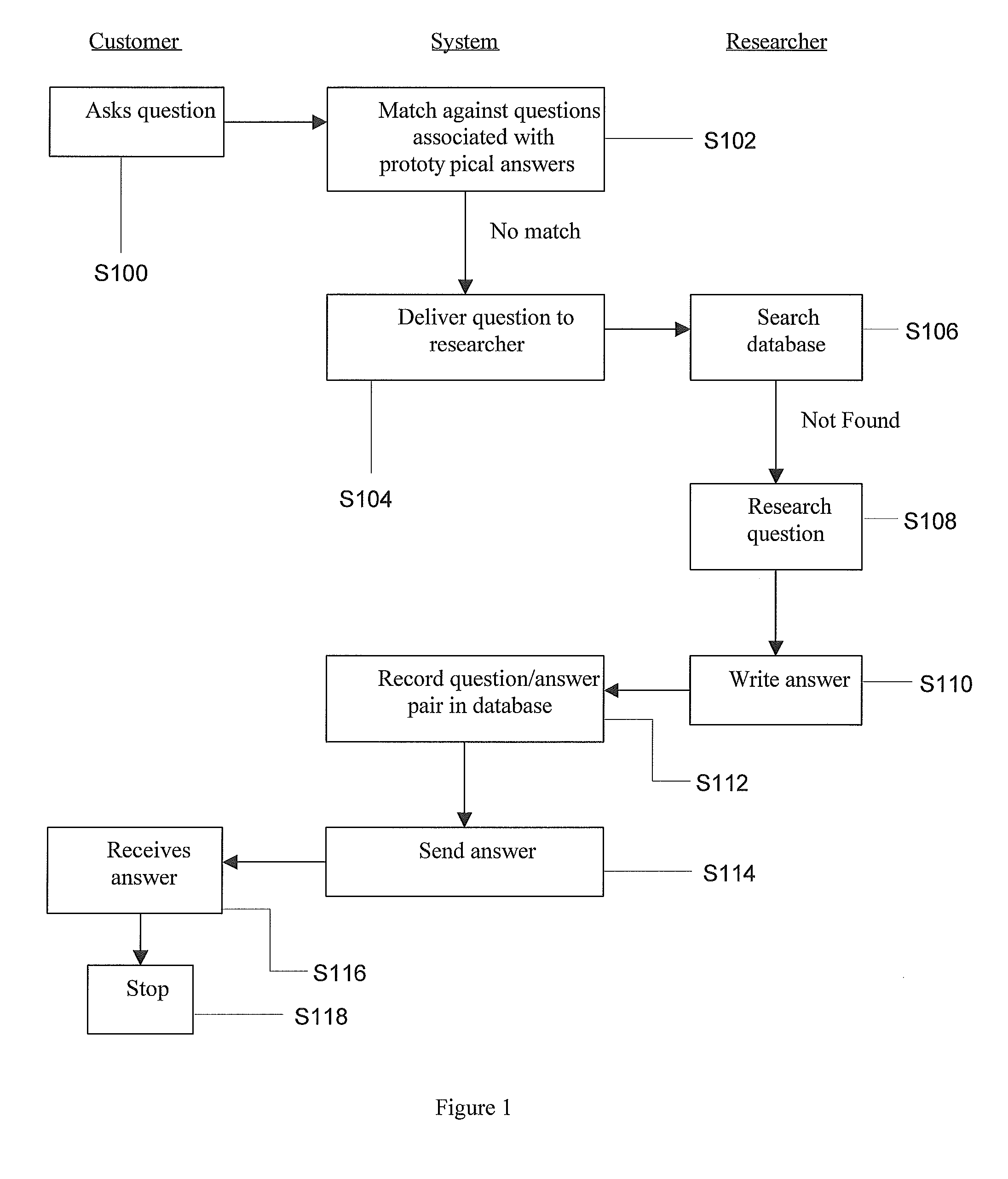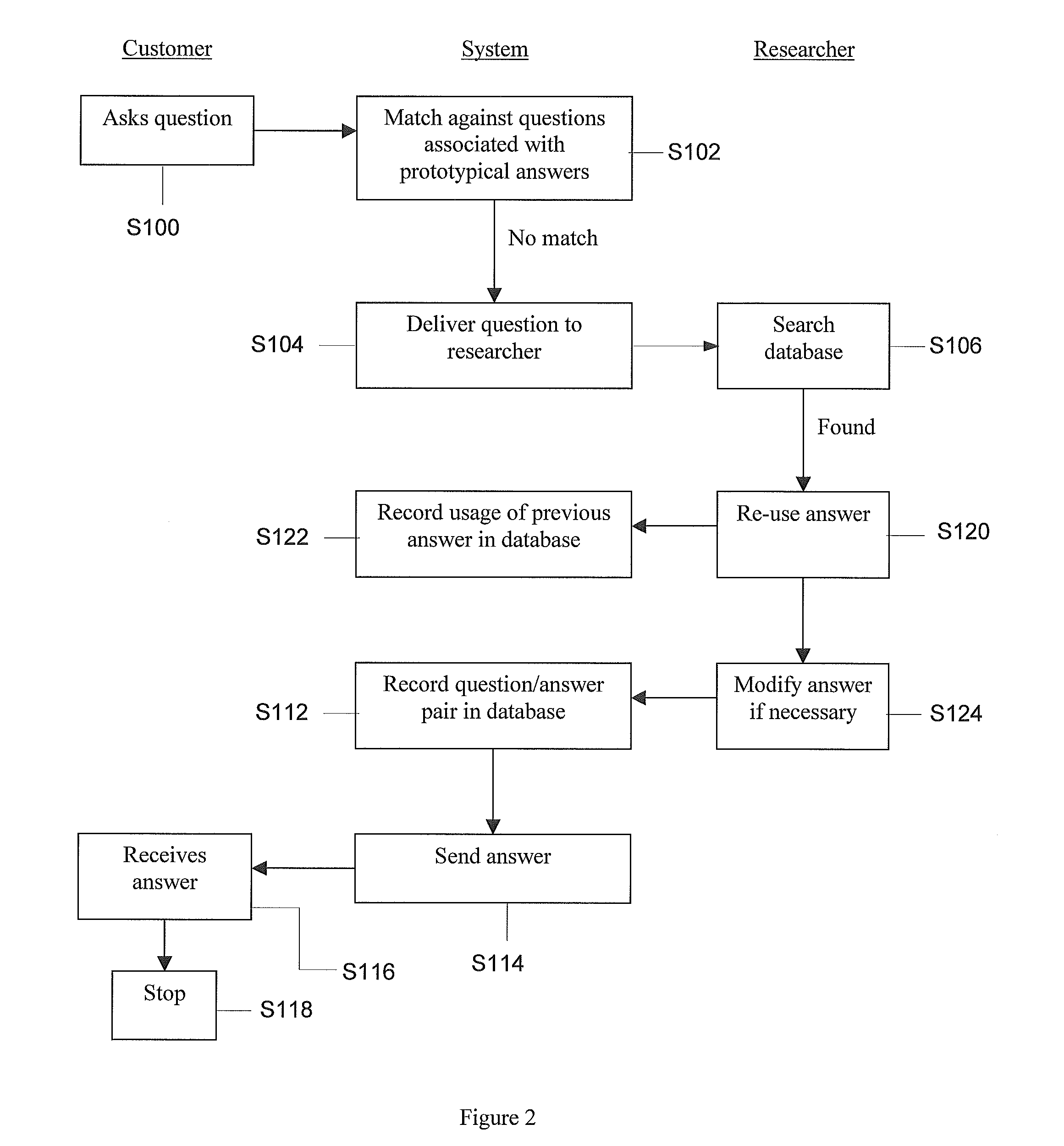Computer system for automatically answering natural language questions
a technology of natural language and computer system, applied in the field of automatic answering natural language questions, to achieve the effect of not slowing down the allocation of work items
- Summary
- Abstract
- Description
- Claims
- Application Information
AI Technical Summary
Benefits of technology
Problems solved by technology
Method used
Image
Examples
Embodiment Construction
[0116]FIGS. 1 to 9 show how one computer system for automatically answering natural language questions operates in response to questions asked by questioners (or customers). The system is independent of the exact transport used to transmit these questions to the system. Potential transports include, but are not limited to, Short Messaging Service (SMS), e-mail and voice messages (which are converted to text through voice-to-text technology or human transcription). Subsequent answers are delivered to the questioner over a similar range of transports. Note that it is not necessary for the answer to a question to be delivered via the same transport.
[0117]FIG. 1 shows the initial stages of formation of a database which is used to automatically answer questions. Initially, questions are answered entirely by human researchers, but a database of all question / answer pairs is maintained. At step S100, a customer asks a question which is transmitted to the system. At step S102, an attempt is ...
PUM
 Login to View More
Login to View More Abstract
Description
Claims
Application Information
 Login to View More
Login to View More - R&D
- Intellectual Property
- Life Sciences
- Materials
- Tech Scout
- Unparalleled Data Quality
- Higher Quality Content
- 60% Fewer Hallucinations
Browse by: Latest US Patents, China's latest patents, Technical Efficacy Thesaurus, Application Domain, Technology Topic, Popular Technical Reports.
© 2025 PatSnap. All rights reserved.Legal|Privacy policy|Modern Slavery Act Transparency Statement|Sitemap|About US| Contact US: help@patsnap.com



